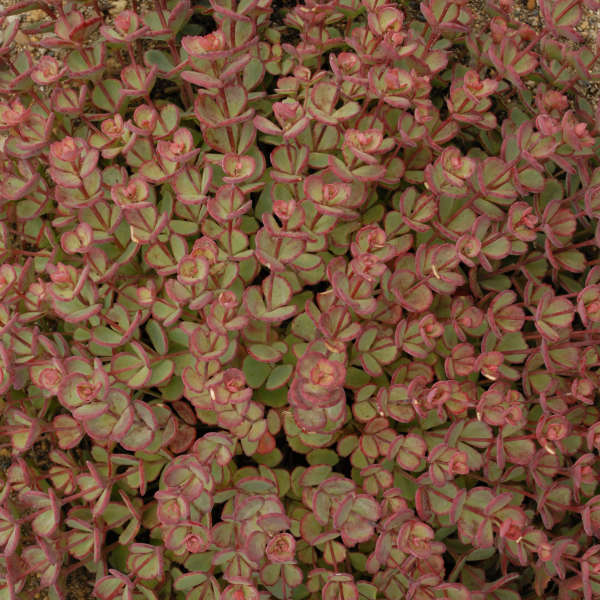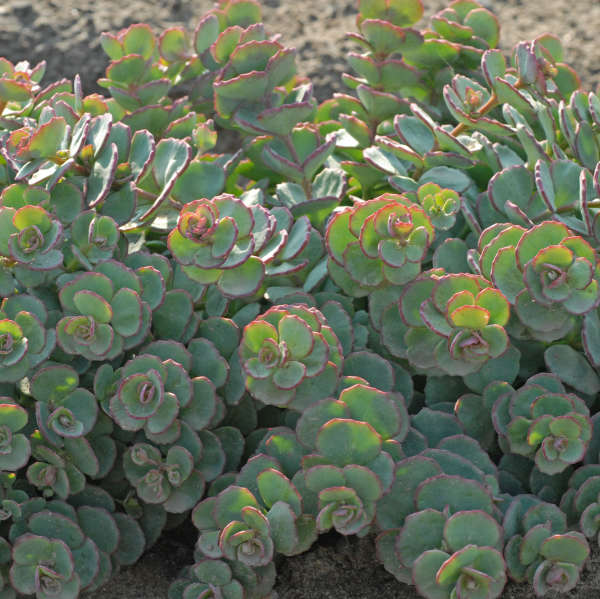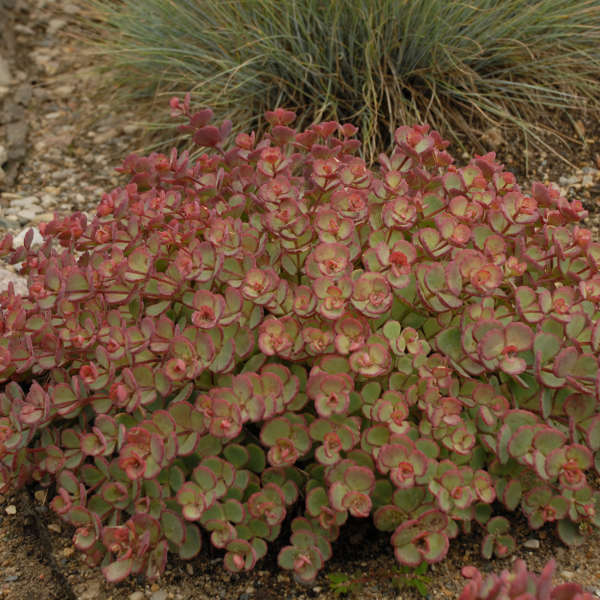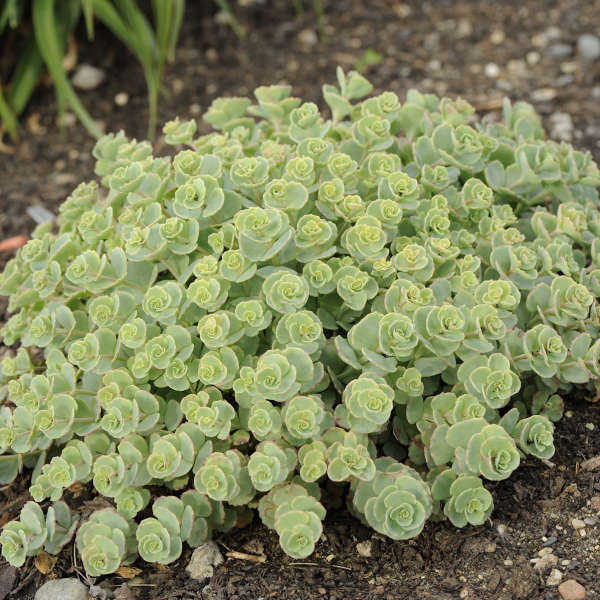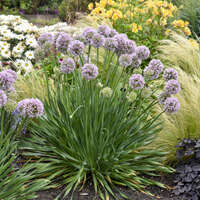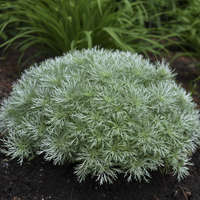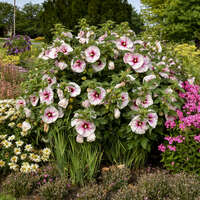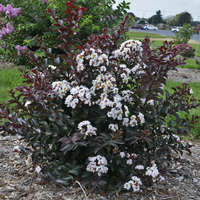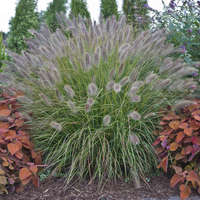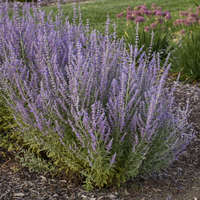Sedum sieboldii
Common Name: October Daphne Stonecrop
Often described as having the most beautiful foliage and form of all sedums, this adorable little plant looks great all summer long and then really comes into its own in fall.
Sedum sieboldii is a low, spreading species that forms a rounded mound, sending out horizontal branches from the central crown. The ¾" round, blue-green leaves are borne in 3's around the stems and each leaf is narrowly outlined in deep pink. During the hot summer months, this pink edge intensifies. In early fall, bright pink, star-shaped flowers are borne in small clusters at the ends of the stems.
One of the most beautiful features of this perennial is its fall color. When sited properly, the foliage turns beautiful shades of pink, red, yellow, and orange. Often, the plant is still flowering when its fall coloring begins to appear.
This plant has a wide variety of uses in the home landscape. It can be used as a small-scale groundcover, as an edging, in rock gardens, or tucked into cracks in a rock wall. It also pairs well with other fall flowering perennials in containers. This plant is hardy in most parts of the US, from zones 3-9, so there truly is a place for it in everyone's garden!
Grade #1 Bare Root |
